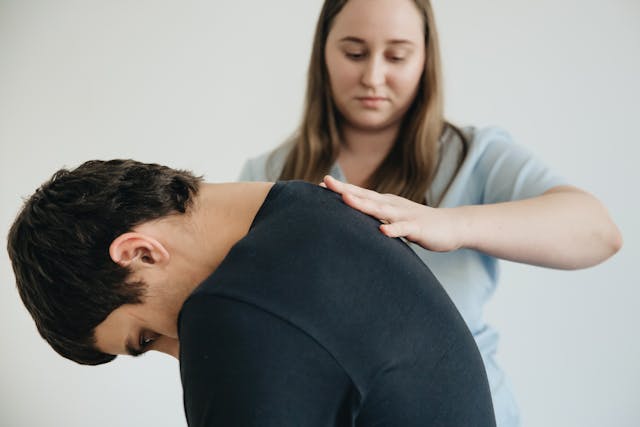Muscle pain is a common experience that affects people of all ages, from teens to adults. Whether you’re a seasoned athlete, a casual gym-goer, or someone dealing with everyday physical strain, understanding the different types of pain can help you better manage your discomfort. By exploring the causes, you can take steps to prevent it and know when to seek guidance for further support.
Delayed Onset Muscle Soreness (DOMS)
If you’ve recently tried a new workout or pushed yourself harder at the gym, you might have experienced Delayed Onset Muscle Soreness (DOMS). This type of muscle pain usually sets in 24-48 hours after exercise and is common among athletes and fitness enthusiasts. It’s a natural part of the body’s recovery and typically subsides with rest and proper care.
DOMS is believed to occur due to tiny tears in your muscle fibers caused by new or intense activities. While it’s a completely normal response to physical effort, it can feel uncomfortable. The soreness often peaks around the second day after exercise and then gradually subsides. Taking time to rest, gently stretching, or applying a cold compress can help alleviate the discomfort.
Acute Muscle Pain from Strains or Overuse
Acute muscle pain typically arises from muscle strain or overuse. Strains occur when your muscles are stretched beyond their limits, causing minor to severe injuries. Overuse, on the other hand, results from repetitive movements during activities like running or lifting too much weight.
Signs of acute muscle pain include sharp discomfort, swelling, or tenderness in a specific area. If the pain occurs suddenly during an activity (such as while lifting or sprinting), it’s wise to rest the muscle immediately to prevent further injury. Simple measures like icing the area and avoiding strenuous movements may aid recovery. Prolonged or intense pain might require professional advice.
Chronic Muscle Pain and Common Causes
Unlike acute forms, chronic pain tends to linger for weeks or even months. It may be related to long-term issues like poor posture, repetitive strain injuries, or certain conditions that increase muscle tension. If chronic pain becomes frequent, analyze your daily habits and make adjustments to your routine. Incorporating ergonomic workplace setups or taking regular breaks may help reduce unnecessary strain.
A few more common causes include:
- Postural Imbalances: Sitting for extended periods at a desk or carrying heavy bags often contributes to tension in the neck, shoulders, or back.
- Stress or Fatigue: Emotional or physical stress can lead to muscle tightness, particularly in areas like the jaw or shoulders.
- Repetitive Activities: Tasks like typing or assembly-line work put constant pressure on specific muscles, potentially resulting in chronic pain.
Muscle Cramps and Tightness
Muscle cramps, sometimes called “Charley horses,” occur when muscles contract involuntarily, causing sudden and intense pain. These are often linked to dehydration, overuse, or an imbalance in essential minerals like potassium or magnesium. If cramps persist or are accompanied by other symptoms, they may indicate an underlying issue that requires further attention.
To avoid cramps:
- Stay properly hydrated throughout the day, especially during workouts.
- Incorporate foods like bananas or leafy greens into your diet to maintain mineral balance.
- Perform dynamic stretches before and after physical activity to keep muscles flexible.
Taking Control of Muscle Pain
Muscle pain can range from mild soreness to persistent discomfort, depending on the type and cause. While most cases resolve naturally with rest and care, understanding the underlying reasons can empower you to make better decisions for your well-being. If pain is disrupting your daily life or fitness routine, it may be helpful to consult a health professional or fitness specialist for tailored recommendations.

